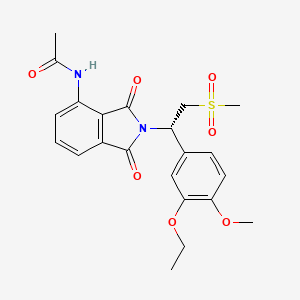Psoriatic arthritis
Adult: As monotherapy or in combination with disease-modifying antirheumatic drugs (DMARDs) in patients with active cases who have had an inadequate response or who have been intolerant to previous DMARD therapy: Initial titration schedule: Day 1: 10 mg in the morning. Day 2: 10 mg bid. Day 3: 10 mg in the morning then 20 mg in the evening. Day 4: 20 mg bid. Day 5: 20 mg in the morning then 30 mg in the evening. Day 6 and thereafter (recommended maintenance): 30 mg bid (approx 12 hours apart).
Oral
Plaque psoriasis
Adult: For the treatment of moderate to severe chronic cases in patients who are intolerant to, failed to respond to or who have a contraindication to other systemic therapy or phototherapy: Initial titration schedule: Day 1: 10 mg in the morning. Day 2: 10 mg bid. Day 3: 10 mg in the morning then 20 mg in the evening. Day 4: 20 mg bid. Day 5: 20 mg in the morning then 30 mg in the evening. Day 6 and thereafter (recommended maintenance): 30 mg bid (approx 12 hours apart).
Oral
Oral ulcers associated with Behcet’s disease
Adult: In patients who are candidates for systemic therapy: Initial titration schedule: Day 1: 10 mg in the morning. Day 2: 10 mg bid. Day 3: 10 mg in the morning then 20 mg in the evening. Day 4: 20 mg bid. Day 5: 20 mg in the morning then 30 mg in the evening. Day 6 and thereafter (recommended maintenance): 30 mg bid (approx 12 hours apart).




 Sign Out
Sign Out




